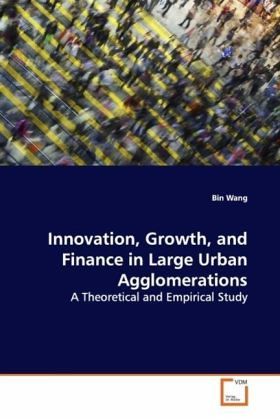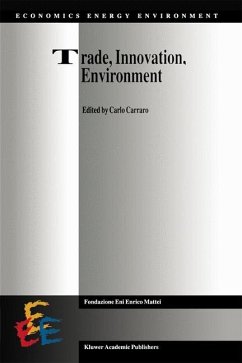
Innovation, Growth, and Finance in Large Urban Agglomerations
A Theoretical and Empirical Study
Versandkostenfrei!
Versandfertig in 6-10 Tagen
32,99 €
inkl. MwSt.

PAYBACK Punkte
16 °P sammeln!
According to statistics of the United Nations, theworld counted 4.07 billion people in 1975 and reached6.46 billion in 2005. It is expected that in 2030 theworld population will reach 8.19 billion. Byconsidering these figures the number of cities withfive million inhabitants and more, which was about 40in 2001, will rise up to 58 in 2015. This fast growthof world population causes international developmentinstitutions and world politics to face greatchallenges. In order to answer how governance andpublic policy affect urban and economic growtheconomists have developed theories of city systemss...
According to statistics of the United Nations, the
world counted 4.07 billion people in 1975 and reached
6.46 billion in 2005. It is expected that in 2030 the
world population will reach 8.19 billion. By
considering these figures the number of cities with
five million inhabitants and more, which was about 40
in 2001, will rise up to 58 in 2015. This fast growth
of world population causes international development
institutions and world politics to face great
challenges. In order to answer how governance and
public policy affect urban and economic growth
economists have developed theories of city systems
since the mid-1970s. How institutions can boost and
restrain both urban and economic development and how
economic development and urbanization intersect with
or define eachother, will be the main issues in this
book. Starting with theories of systems of cities,
this work demonstrates China s distinctive features
as well as the outcomes of its urbanization.
world counted 4.07 billion people in 1975 and reached
6.46 billion in 2005. It is expected that in 2030 the
world population will reach 8.19 billion. By
considering these figures the number of cities with
five million inhabitants and more, which was about 40
in 2001, will rise up to 58 in 2015. This fast growth
of world population causes international development
institutions and world politics to face great
challenges. In order to answer how governance and
public policy affect urban and economic growth
economists have developed theories of city systems
since the mid-1970s. How institutions can boost and
restrain both urban and economic development and how
economic development and urbanization intersect with
or define eachother, will be the main issues in this
book. Starting with theories of systems of cities,
this work demonstrates China s distinctive features
as well as the outcomes of its urbanization.












